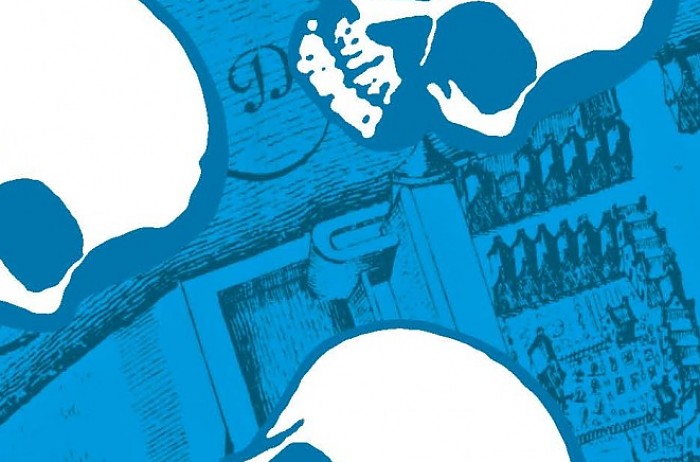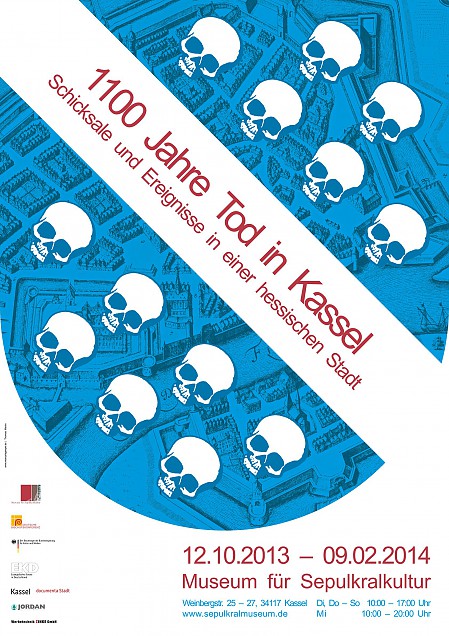

12. October 2013 – 19. February 2014
Fates and events in a Hessian city
What did the people of Kassel protect themselves with against the plague? Where and how did they find their last rest? Why was there a Black Knight in Kassel? What did the women of Kassel wear in death? Why was Mrs Albri's house not destroyed in the night of the Kassel bombings? What does the King Tiger have to do with Kassel? Why did Kassel's largest church become a death trap?
These and other questions are the focus of the new special exhibition 1100 Years – Death in Kassel. The occasion to highlight this aspects of the citys history with the focus on death and dying in an exhibition was the 1100th anniversary of the city of Kassel.
Events, stories, facts and incidents from the categories of natural death and violent death are illustrated. Diseases play a role here, but also accidents and murders. Further topics are the hospital and hospice system, the burial sites that have changed in the course of history, as well as images of death and memorial signs in public space. The Holocaust and the bombing of Kassel also play a role.
Highlights of the exhibition are the funeral clothes of Landgraf Wilhelm VI and Louise Dorothea Sophia of Brandenburg-Prussia (first wife of Landgrave Friedrich I. ) from the crypt of the Martinskirche; also archaeological finds from the Thirty Years' War, the tomb of the Black Knight alias Christian von Eschwege, a centuries-old fateful stone fragment from St. Martin's Church, a commemorative medallion with the hair of the last prince of the Hesse-Kassel line, a letter from Goethe to Samuel Thomas Soemmerring, professor of anatomy at the Collegium Carolinum in Kassel, the original death mask of the composer Louis Spohr, stumbling blocks created by the artist Gunter Demnig to commemorate the Jewish couple Dalberg from Kassel who fell victim to the Nazi regime, a piece of track from the tank Tiger 1 and a piece of track from the tank Tiger 2. and much more.
In addition, special productions give visitors the opportunity to admire the no longer existing dome vault of the Kassel Anatomy, once housed in the Ottoneum – it was painted with impressive allegories of death. You can also enter the Bergpark and view some of its death related monuments.
Last but not least, people in this city who are constantly confronted with death, either professionally or through voluntary work, have their say. In film portraits they give an insight into this work and talk about the influence it has on their lives.

Curation: Ulrike Neurath (Museum für Sepulkralkultur)
Exhibition design: Dipl. Des. Ole Werner (ole_werner@entwurfsraum.de)
Exhibition Keyvisual: Manuela Greipel | Visuelle Kommunikation
Arbeitsgemeinschaft Friedhof und Denkmal e.V.
Zentralinstitut für Sepulkralkultur
Museum für Sepulkralkultur
Weinbergstraße 25–27
D-34117 Kassel | Germany
Tel. +49 (0)561 918 93-0
info@sepulkralmuseum.de








